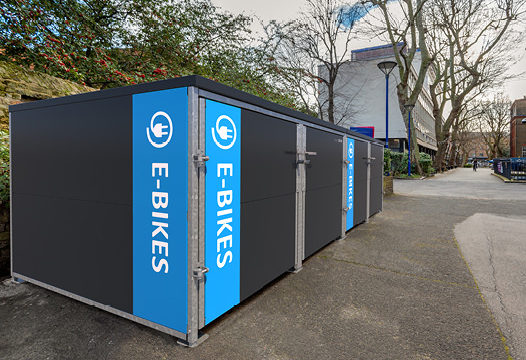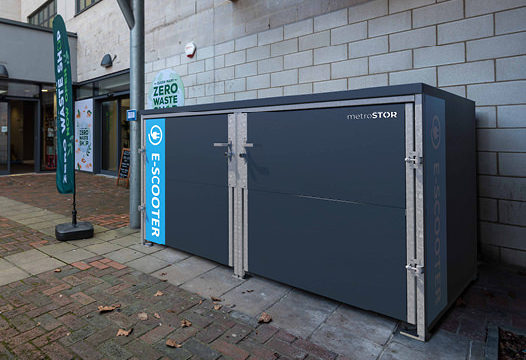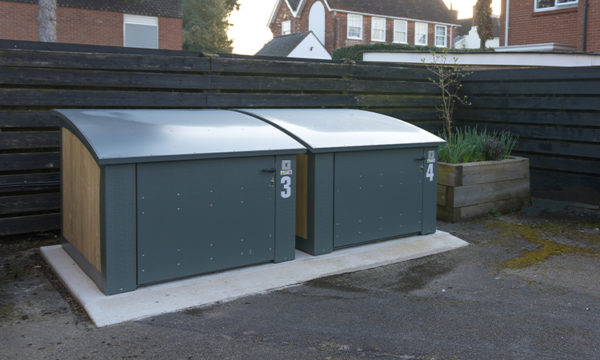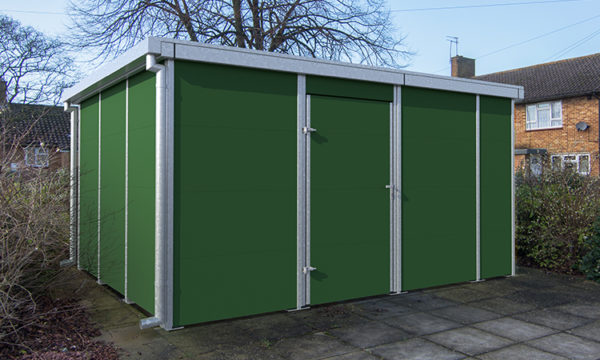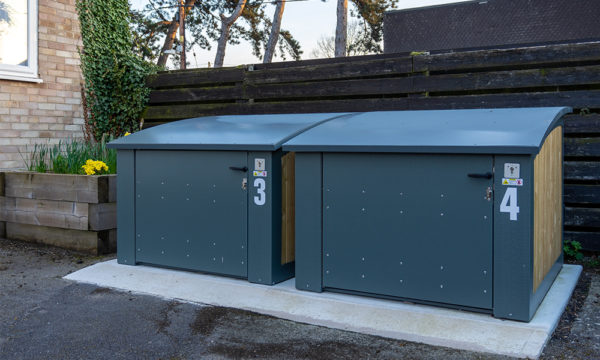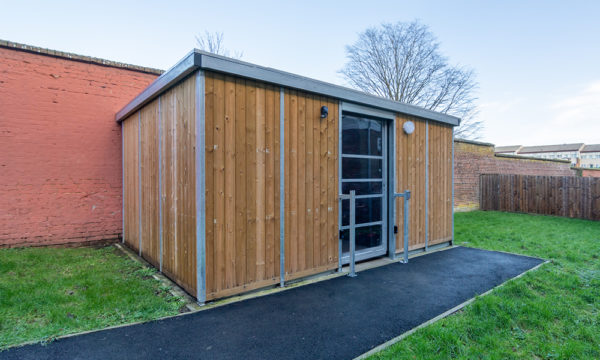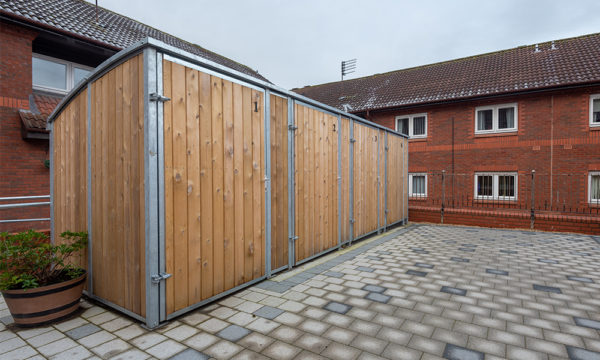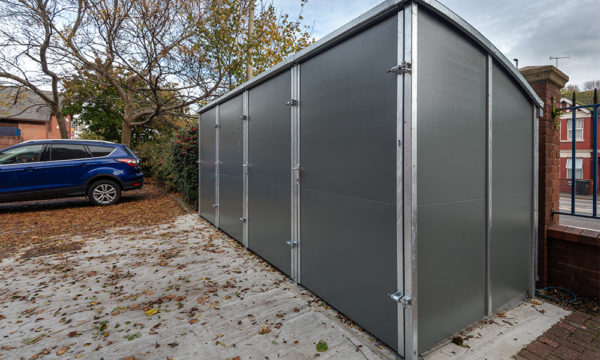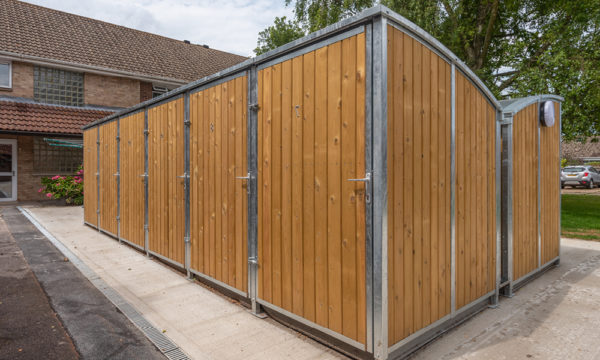Greener forms of travel such as e-bikes, e-scooters and mobility scooters are central to today’s urban communities and metroSTOR secure external storage and charging facilities are designed to reduce fire and theft risks for personal mobility devices.
As the UK’s leading manufacturer of external storage and charging units for personal mobility devices, metroSTOR BIKE-E, BIKE-ES, PSL, PSM and PSH provide safe storage and individual battery charging for e-scooters, e-bikes and mobility scooters, from single locker format to communal hub buildings.
With easy to configure specifications that include options for fire-resistant enclosures, energy consumption metering, access control, security ratings and product finishes, metroSTOR personal mobility device storage and charging units are proven product systems backed by a 3 year limited warranty.
As a brand of Streetspace, metroSTOR project delivery capability extends to turnkey installation packages including planning applications, enabling civil engineering and electrical works.
Powered Mobility Devices – FAQs
Why are lithium-ion batteries a potential fire risk?
Even small Lithium-ion batteries can explode with huge force and burn fiercely if damaged, either physically or through over-charging, an action known as ‘thermal runaway’. A huge volume of toxic gases is emitted, between 300-6000L from a 1kWh battery typically fitted to an e-bike.
In poorly-ventilated areas this can lead both to fatalities through inhalation but also a huge deflagration when ignited, with fire then spreading via any combustible materials that are present such as tyres, seats, fenders, carpets and furniture, etc, reaching 900deg and presenting firefighters with huge challenges to extinguish. Powered Mobility Devices are at risk of having non-standard batteries, chargers and other components fitted after purchase, many of which are often of dubious quality, and some such as e-scooters are particularly vulnerable to damage with the likelihood of the battery casing making contact with the ground.
How often have such incidents occurred?
There has been an alarming increase in fires affecting e-bikes and e-scooters in recent months, some of which have tragically resulted in fatalities (in the US and other countries). London Fire Brigade attended over 100 such incidents last year and this is escalating very rapidly indeed and they strongly recommend that Lithium-ion powered devices are not stored indoors if at all possible.
What are the implications for landlords?
Landlords have obligations under the Fire Safety Order to ensure that tenants are not exposed to fire risk and that escape routes are maintained. They have a legal responsibility to maintain common areas in a sterile condition (no combustibles), and this extends to minimising particular risks within tenants’ flats such as mobility scooters.
The effects of such an event occurring anywhere inside a building are unthinkable, let alone inside someone’s flat. While simple steps can be taken to reduce the risk such as not charging at night-time, fitting alarms, etc ultimately the only way to remove the risk is to create secure external charging points.
Many landlords have adopted the relevant NFCC guidance for mobility scooters, but as e-bikes and e-scooters are not generally regarded as ‘essential’ in the same way as a mobility scooter might be, landlords could just ban them from being brought into their buildings. However, landlords try to accommodate their tenants’ wishes where possible and preventing them from choosing green travel options in preference to car usage would be seen as regressive.
So what points should I bear in mind when making provision for safe charging and storage?
Capacity
How many flats are there in the block and how many have e-bikes/e-scooters already? You might want to survey residents to find out how many would buy one if a safe form of storage was provided. A modular product could allow additional capacity to be added in the future if demand increases.
Location
The facility should be in an accessible location for users but at a safe distance from the building to prevent fire spreading to dwellings. The NFCC guidance recommends 6m but this can be difficult to achieve in many areas due to a lack of space, in which case a fire resistant specification should be used. Placing it within a secure garden area in full view of residents’ flats increases natural surveillance, whereas hiding from public view restricts the attention of potential thieves. Locate reasonably close to a landlord’s electrical supply to keep connection costs reasonable.
Specification
The store should comfortably accommodate all sizes of e-scooter or e-bike that are likely to be used without creating spare space that could attract bulky waste or even rough-sleepers. Choosing a product that has at least 30min fire-rating will be particularly important if less than 6m from dwellings and one with some form of fire-suppression will limit damage to other devices in the event of a thermal runaway event.
Accessibility
It will be challenging for mobility scooter users with reduced mobility to access an external storage facility, but this must be balanced with the need to maintain the safety of all residents. It must be possible for the store to be reached safely by all users, and this should be as close to the building entrance as possible without compromising fire safety guidelines and provided with well-lit access paths, compliant ramps, and handrails on any changes of level.
The challenge can be mitigated by providing automated access doors and increasing the width of the store to give space for users to transfer from wheelchair to scooter.
Security
Many of the devices will be highly valuable, so specifying a unit that has been tested to a relevant security standard will add more layers of protection. This could include Sold Secure Cycle Gold or Cabinet Silver for example as applying to both the external envelope and secure locking points for users to add their own locks.
Costs
Trying to do this on the cheap should not be an option given the risk to life and value of property involved. But neither should the landlord be bearing the full brunt; it should be clearly understood that if someone chooses to purchase a personal mobility device then they will be expected to pay a rental for the storage and charging as they would with a garage or parking bay for their car.
As an approximate guide, we recommend you allow £5,000 per mobility scooter, including all necessary groundwork, electrical connections, and all relevant consents. Providing storage for every user may be unrealistic, but creating a basic level of provision will reduce the risk for landlords. It also provides a framework to manage who has a scooter, where they store it, and how they pay for this storage and electricity used.
